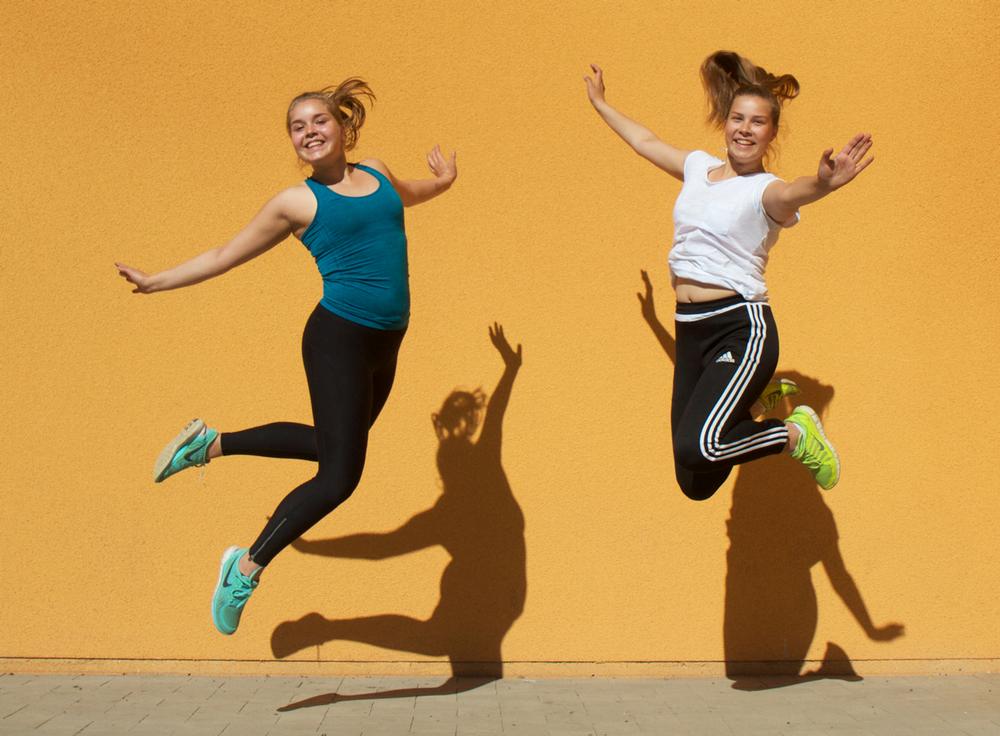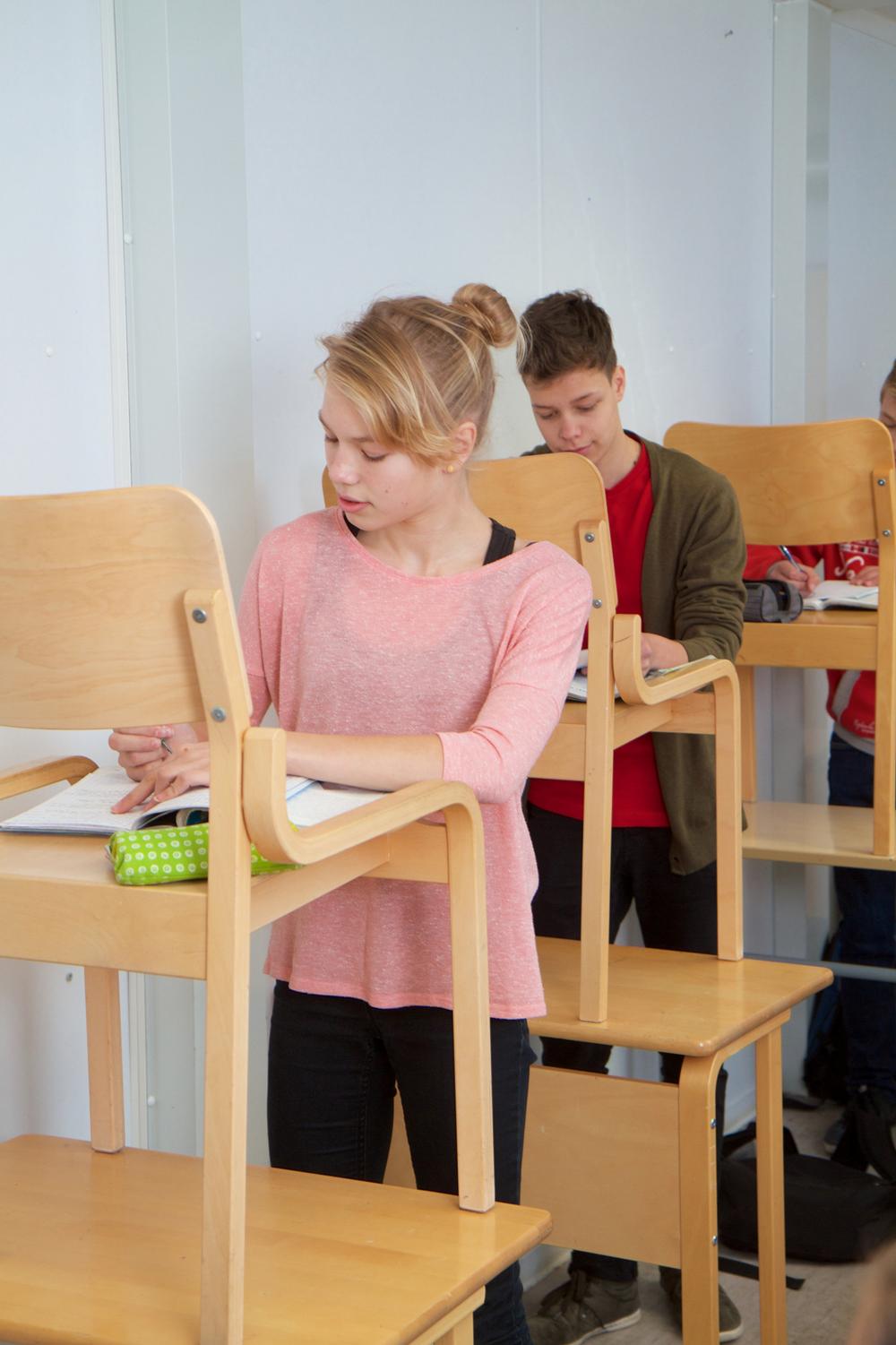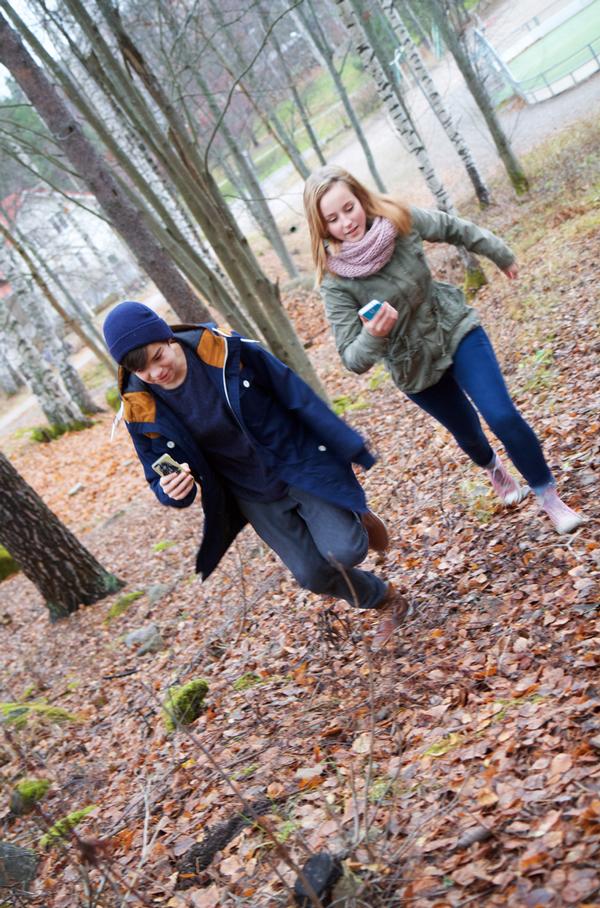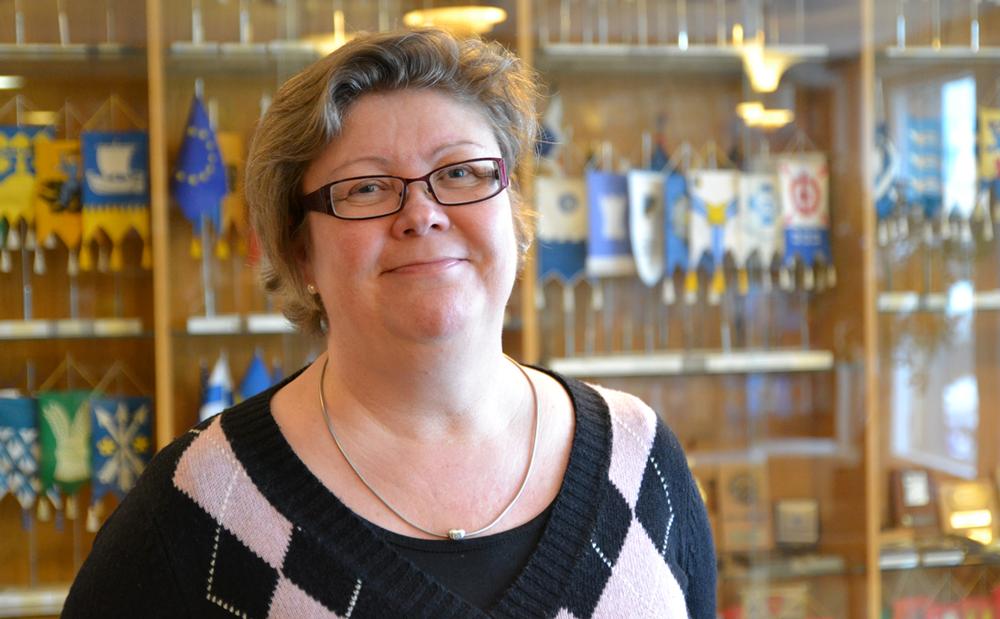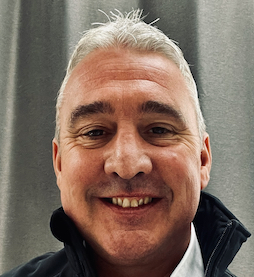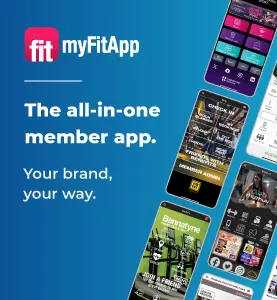This isn’t your average maths class. A group of seven-year-olds are taking part in an impromptu race around the school gym, while other groups play basketball and bounce on trampolines. All around the place, children are being active, burning energy – until a teacher blows her whistle. At the sound of it, the pupils stop and head back to the classroom where they settle down to their work stations – consisting of a gym ball and a desk – and get on with the matter in hand, times tables.
This is what an active classroom looks like in Seinäjoki, a city in western Finland, which has adopted a holistic plan for tackling childhood obesity.
The programme, entitled ‘Lihavuus Laskuun’ (which roughly translates as “Overcoming Obesity”), incorporates all aspects of public services: child care, nutrition, recreation, urban planning – and education. As part of Lihavuus Laskuun, most of the schools in the city have signed up to a scheme called Schools on the Move.
ACTIVE SCHOOLS
Now a nationwide programme of Schools on the Move aims to ensure that Finnish children remain physically active throughout the school day. It has introduced an entirely new model for learning to Finland’s schools – one in which studying is regularly interrupted, not by restless students, but by approved bouts of physical activity.
“The idea is to mix education with movement and avoid children having to sit down for long periods of time,” says Antti Blom, national programme director for Schools on the Move.
“You could say that Schools on the Move introduces functional learning in all its forms. As well as scheduled exercise breaks before and after lessons, many schools offer students the opportunity to stay active during learning.
“Teachers incorporate activities into learning, and chairs are being replaced by gym balls or standing desks to allow the children to strengthen their core muscles while they study.” (see box, ‘Active classrooms’, on p78)
Schools on the Move is funded by the Finnish Ministry of Education and Culture (MEC) and operated by the Board of Education, in partnership with local government authorities and agencies. Local councils and city authorities can apply for funding from an annual pot of €7m, which is distributed evenly across the country. Any authority wishing to receive funding has to match the funding that it receives. Therefore, the annual cost of Schools on the Move to the taxpayer can be calculated as being around €14m a year.
NOTABLE IMPACT
The scheme was first launched as a two-year pilot in 2010, when 45 Finnish primary schools (for children aged seven to 12 years) and secondary schools (13- to 16-year-olds) took part. Early results were so encouraging that the programme was expanded for 2014.
By 2015, 31 per cent of all Finnish schools had adopted the programme. Today, more than 80 per cent of Finnish children under the age of 16 are part of the Schools on the Move network.
Research into the impact of the programme has shown that the approach works. A report in 2016 showed that 70 per cent of all primary school children now achieve the national target of one hour of physical activity in the school day.
The scheme has also had a positive effect on learning. Ninety per cent of teaching staff surveyed on the effects of Schools on the Move responded by saying that the increased physical activities during recesses contributed to a “peaceful learning environment”.
The success of the scheme resulted in the government last year (2016) announcing that the programme would be further expanded to cover colleges and other upper secondary school institutions (for children aged 16+).
According to Blom, the programme’s success is down to its bottom-up approach, where the schools are placed at the centre of the programme. “While we provide the framework, recommendations and targets, we don’t directly tell schools what they should be doing,” Blom explains. “It’s the schools that come up with the ideas and innovations regarding how activities can best be mixed with learning in their own environment.
“We then collect examples of the actions that schools have implemented and share the knowledge centrally with other schools. That way, we’re able to establish benchmarks and methods that actually work – and schools can learn and pick up ideas from each other.”
CITY-WIDE APPROACH
The city of Seinäjoki embraced Schools on the Move as part of a city-wide adoption of Lihavuus Laskuun. Its widespread action plan to improve public health and wellness was deemed necessary in 2009, when a study found that nearly one in five (17 per cent) of the city’s five-year-olds was either classed as overweight or obese.
“We realised we had to do something,” says Ulla Frantti-Malinen, co-ordinator of health and welfare promotion for the City of Seinäjoki Council. “And what we did was get every department in the local authority together to get them working towards a common goal: tackling obesity.”
Frantti-Malinen says that since then, the city’s health department has worked together with the childcare, education, nutrition, recreation and urban planning departments – as well as outside agencies such as Schools on the Move – on a number of new initiatives.
“The urban planning department has improved school playgrounds and other outdoor leisure spaces to make access to physical activity easier, while the schools have adopted the Schools on the Move programme”, she says.“The foundations for a healthy lifestyle are built in cooperation with the families. We begin at family planning and maternity clinics, where expectant mothers receive advice on diet and lifestyles, and continue it throughout children’s school lives.”
The measures introduced under the Lihavuus Laskuun programme have had a major impact. In 2011, a study showed 14 per cent of Seinäjoki’s seven-year-olds and 16.1 per cent of 11-year-olds were overweight. By 2015, the figures had fallen to 8.7 per cent and 8.2 per cent respectively.
According to Frantti-Malinen, the success is very much down to all local authority departments pulling together. “We now have a strong commitment to the programme across the city,” she says. “This isn’t just a project – it’s a new approach to doing things, from how we plan our environment to the way that we deliver education.
“By curbing childhood obesity early and introducing healthy lifestyles, we can help ensure that children grow up to be healthy adults – which will ultimately have positive implications on healthcare costs and future planning decisions.”
EXPORTING WELLNESS
As childhood obesity is increasingly a global problem, the results of the ‘Seinäjoki experiment’ haven’t gone unnoticed outside Finland. In 2015, the World Health Organization hailed the programme as an example of how a “health in all policies” approach can deliver impressive results.
There’s also a direct copy of the Lihavuus Laskuun programme currently in the works. A delegation from the South Korean capital, Seoul, visited Seinäjoki in 2016 with the aim of kickstarting a similar plan of action across the city’s Gangdong district.
“Obesity is a growing problem in South Korea,” says Eun Sook Moon, senior researcher from the Seoul Institute. “When searching for ways to tackle the problem, we came across Seinäjoki and what the city has done – and we were impressed. It’s the preventative aspect that interests us the most.”
For Frantti-Malinen, the interest shown in what Seinäjoki is doing – by a city on the other side of the world nearly 20 times its size – is an example of how tackling inactivity is now a global issue.
“The network of people tackling the problem of obesity and improving wellness is no longer a local, regional or national one,” she says. “It’s a global problem. And we’re proud that we’re doing something that’s getting such recognition.”








